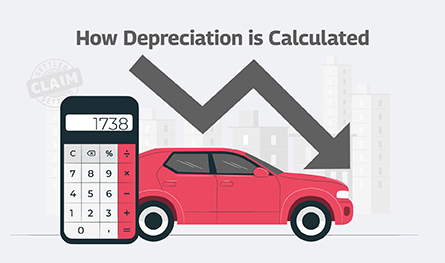Steps Involved in Making a Death Claim On a Life Insurance Policy
.png)
Death of an immediate relative gives unbearable pain, which is hard to endure. However, despite the pain, it is important to proceed with the death claim for the life insurance of the deceased person, especially if he/she was the only earning member of the family.
.png)
If you are unaware of the process that is involved in making a death claim, here’s what you need to know to make the otherwise unbearable process somewhat endurable.
In this blog, we are discussing the entire death claim process or how to claim policy after death starting with the meaning of the claim.
What is a death claim in life insurance?
A death claim is an official request that is made by the nominee of a life insurance policy holder to the insurance company to ask for compensation of the amount covered on insured person’s death.
Inform insurer and submit documents
The first step requires you to inform the insurance company about the demise of the insured person as soon as possible. Once they get informed, the insurance provider might ask for evidence in the form of death certificate or related documents. Without a death certificate you cannot claim for a death. But, some insurance companies, such as LIC consider records of hospital and burial as proof of death evidence if the death took place in a hospital. You can clarify this with the insurance company.
Below are the documents required by your insurance company:
- Death claim form – filled properly
- Death certificate – original (as received from the neighboring civic authority)
- Policy documents – original
- Identity proof of the person claiming the compensation (includes photo and home address)
- Bank account details (copy of cancelled cheque)
Documents required for non-accidental deaths:
In addition to the above, the nominee might have to provide some additional documents if the death has caused due to non-accidental reasons. Here are the documents you would need to provide:
- Death certificate – (with reasons including both medical and legal documents)
- Hospital records – (including admission details, summary discharge, reports of tests)
- Hospital copy of a certificate completed by the doctor who treated the patient
- Certificate from employer (in case of salaried workers)
Documents required in case of accidental deaths:
- Copy of FIR or Panchnama
- Report of post-mortem (for deaths caused due to accidents or for suicides)
- Driving license copy (in case the death was caused due to accident and the insured person was driving at that time)
How long it takes for a claim to settle?
The insurance company categorizes life insurance claims into two kinds:
- Early claims
- Non-early claims
In case of Early Claims, they are caused within the initial 3 years of the start of the policy. On the other hand, non-early claims are those that takes place after the 3years of the policy commencement.
Usually, the non-early claims are completed within 10 working days. The early claims might take 45 or more days to settle.
The regulation of IRDA (Insurance Regulatory and Development Authority) states that acceptance or denial of the claims should take place within the first 30 days of receiving the evidential documents. However, if any particular case requires investigation, the insurance company might take as many as 120 days to settle the claim process.
How to claim term insurance after death?
A death claim settlement can be made by the nominee(s) of the deceased person. In case the nominee is a minor, it might be made by the guardian of the deceased. In some case the insured might assign someone to make the claim for his/her death.
However, in case of absence of a nominee or if the nominee is also not alive, then anyone with proof of legal heir to the claim can submit the proof and make the claim. Here, succession certificate or any other similar document might be required (given by a Court).
What if the policy document is lost?
If the policy document of the deceased person is not available or is lost, an indemnity bond can be submitted by the beneficiary. The bond should underwrite the insurance company for third-party claim account loss.
How is the rider claim processed?
To claim for add-ons along with death claims, the nominee might require to submit an FIR along with other documents like report of post-mortem etc.
What types of deaths are not covered?
Here is the list as stated below:
- Death caused by natural disaster such as floods
- Death due to accident – except when covered as an add on. (The condition is that the policy owner should not be under the influence of alcohol or drugs when the accident took place)
- Death due to suicide
- Death due to illness. (in case of critical illness or illness caused by habits like smoking)
- Death caused by complications in pregnancy.
Is it possible to change the payout option?
In normal circumstances, insurance company don’t allow to modify the payout option that has been agreed upon at the time of policy buying. But, some insurers might allow the nominee to change the payout option, particularly if it is a lump sum payment option already mentioned in the form of claim.

Author Bio
Paybima Team
Paybima is an Indian insurance aggregator on a mission to make insurance simple for people. Paybima is the Digital arm of the already established and trusted Mahindra Insurance Brokers Ltd., a reputed name in the insurance broking industry with 21 years of experience. Paybima promises you the easy-to-access online platform to buy insurance policies, and also extend their unrelented assistance with all your policy related queries and services.
Other Life Insurance Products
Latest Post
.jpg)
Having a bike is not just about convenience, it’s a huge responsibility. Financial protection of your two-wheeler is important and the best way to ensure that is to have a bike insurance policy that will protect you in case of an accident, theft or a natural calamity. There are so many options when it comes to policies, making it difficult to know what’s best. This guide makes it easier to choose the best bike insurance policy that is suitable for you.


Non-linked, non-participating term plans are the ones that do not participate in the business and profit of the insurance company. These are fixed premium plans where the policyholder pays a fixed amount to ascertain a guaranteed sum as a return to be paid to the nominee in case of his/ her demise. Let’s learn more in this post.


Car depreciation implies the difference between the cost of a car at the time of buying the car and when you sell it. A car insurance claim amount is determined by the car depreciation rate. The car depreciation rate is the reduction in the value of your car over its lifespan caused by wear and tear.


Have you ever caught yourself lost in illusions about your daughter's future events, such as her university convocation and first day at work? Her university convocation. When she embarks upon her initial job after graduation will be the day.

.png)
Accidents can happen anywhere, anytime, by your own fault or another person. What’s important is to be prepared for such mishaps. This is where Own Damage Car Insurance comes in handy.




